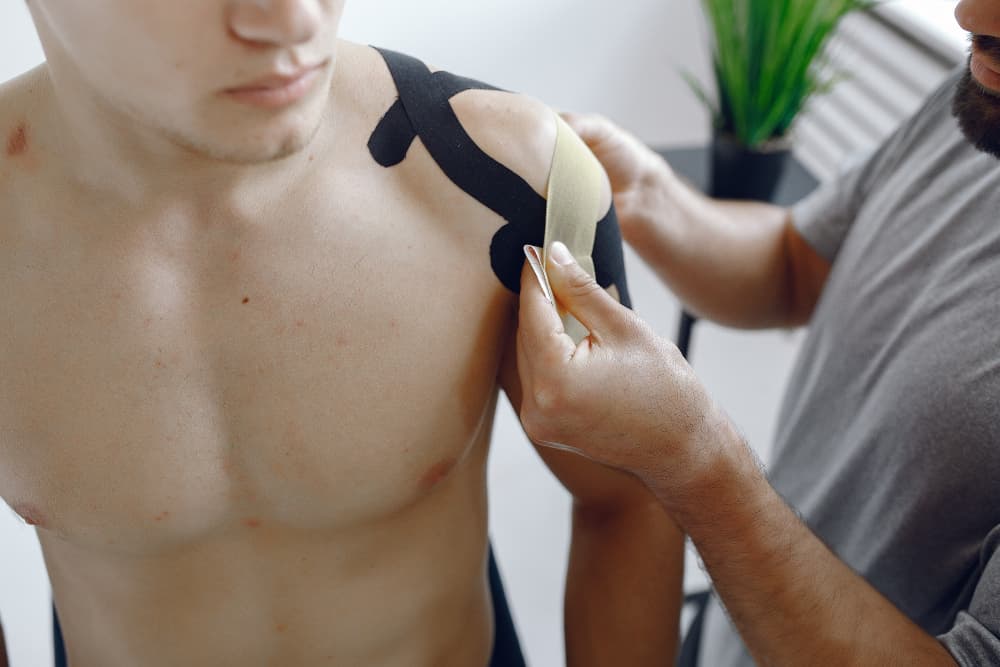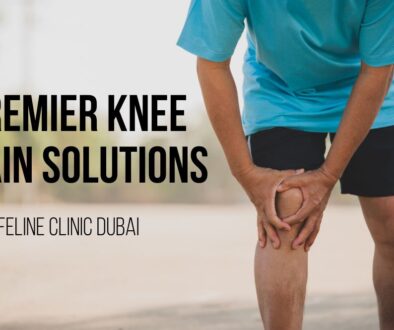Shoulder Treatment in Dubai
Dr. Mahantesh Magadum is an orthopedic surgeon with expertise in complex shoulder treatment in Dubai. Shoulder Instability treatment, Rotator Cuff Tear, Frozen Shoulders, Shoulder Impingement, Shoulder Arthroscopy, and Shoulder Joint Replacement.
The shoulder is the body’s most flexible joint, allowing for a variety of motions such as forward flexion, abduction, adduction, external rotation, internal rotation, and 360-degree circumduction. The least secure joint in the body is the shoulder joint, yet the support of ligaments, muscles, and tendons provides the necessary stability. Dr. Mahantesh Magadum is one of the best specialists for shoulder treatment in Dubai.

Shoulder Instability Treatment
A persistent problem called shoulder instability leads to frequent shoulder joint dislocations. A dislocation happens when the humeral head, or the ball section, separates from the shoulder’s glenoid, or the socket portion. Subluxation refers to a partial dislocation, whereas dislocation denotes a complete separation.
Risk Elements
The following are risk factors that might lead to shoulder instability:
- Trauma or injury to the shoulder
- Tripping and hitting an open hand
- Baseball, swimming, volleyball, or other repetitive overhead sports
- An expanded capsule or loose shoulder ligaments
Symptoms
Common symptoms of shoulder instability include pain during specific shoulder movements, a cracking or grinding sound, and swelling and bruising of the shoulder that may appear very away after subluxation or dislocation. Subluxation results in a visible deformity and loss of shoulder function, and pressure on the nerves and blood vessels below the dislocation can cause feeling alterations like numbness or even partial paralysis.
Conservative Shoulder Treatment
Restoring stability, strength, and a full range of motion are the main objectives of conservative treatment for shoulder instability. The following conventional therapy options are available for Shoulder instability Treatment in Dubai.
- Medication
- Closed reduction
- Ice packs
- Rest for at least two weeks
Surgery
Your surgeon can suggest shoulder stabilization surgery if the conservative therapy methods are ineffective for shoulder instability treatment. In order to increase the stability and functionality of the shoulder joint and stop recurring dislocations, shoulder stabilization surgery is performed. In other cases, with considerably tiny incisions, arthroscopic surgery can be used to complete the procedure. A short flexible tube with a light and a camera at the end is called an arthroscope, and it is introduced into a joint during an arthroscopy to diagnose and treat a problem. Less soft tissue trauma, smaller incisions, less discomfort, and quicker recovery are all advantages of arthroscopy over the more traditional open shoulder surgery.
Rotator Cuff Tear
A collection of tendons known as the rotator cuff supports and expands the range of motion of the shoulder joint. A severe injury to these tendons may cause them to tear, and this condition is known as a rotator cuff tear. It is among the most typical causes of shoulder pain in elderly people and middle-aged adults.

Causes
When the arm is raised, the scapula, a portion of the shoulder blade, put a strain on the rotator cuff, causing tears. It may happen when the arm is used repeatedly for overhead tasks while participating in sports, or in car accidents.
Symptoms Rotator Cuff Tear
Rotator cuff tear results in extreme pain, arm weakness, and a popping sound when the shoulder is moved in particular ways. The front of the shoulder may feel sore, swollen, rigid, and lose its ability to move.
Diagnosis
On the basis of the physical examination, X-rays, and imaging tests such as an MRI, your surgeon determines whether you have a rotator cuff tear. Magnetic resonance imaging is the greatest tool for detecting rotator cuff injuries (MRI).
Rotator Cuff Tear Treatment
- Rest
- Shoulder sling
- Injection of a local anesthetic and a steroid (cortisone) for pain relief in the subacromial region of the injured shoulder to assist reduce swelling and agony
- Specific workouts
Surgery
An arthroscopic treatment or open surgery can be used to repair the rotator cuff. The rotator cuff tendons’ space will be expanded during an arthroscopic operation, and a suture anchor will be used to heal the cuff tear. These anchor sutures support the tendons’ attachment to the shoulder bone. You could be instructed to do strengthening and motion exercises after the operation. If you’re seeking a Rotator cuff tear treatment, get in touch with our clinic.
Frozen shoulder
Adhesive capsulitis, often known as frozen shoulder, is a disorder that causes pain and limited motion in the shoulder joint. Women are more likely to experience it than males, and it is more prevalent in older persons between the ages of 40 and 60.
Causes
The ligaments connecting the shoulder bones to one another become inflamed, leading to a frozen shoulder. Adhesive stiff bands of tissue can form in the shoulder capsule when it grows thick and constricted. Frozen shoulder can occur in people who have had shoulder surgery, had their shoulders immobilized for an extended period of time, or who have diabetes, hypothyroidism, hyperthyroidism, Parkinson’s disease, or cardiac problems.
Symptoms
A frozen shoulder will block shoulder movement and experience pain and stiffness.
Diagnoses
The presence of frozen shoulder symptoms and radiological diagnostic tests, such as X-rays or MRI scans, can both identify the illness.
Conservative Treatment
Options for conservative treatment include:
- NSAIDs and steroid injections for reducing pain.
- The use of physical therapy to increase the range of motion
- Heat will reduce the discomfort
Surgery
When other forms of treatment are unsuccessful, your doctor might advise shoulder arthroscopy. During surgery scar tissue will remove and tightened ligaments. After surgery physical therapy will be advised to restore complete motion and build up the muscles.
Shoulder Impingement
Shoulder impingement is the inflammation of the tendons surrounding the shoulder. It is one of the most typical reasons for adult shoulder pain. It is a “ball-and-socket” joint, the shoulder. The humerus, the upper arm bone, has a ball at the tip that fits precisely into the glenoid, a socket that is a component of the scapula, and the shoulder blade. Other names for shoulder impingement include tennis shoulder, swimmer’s shoulder, and rotator cuff tendinitis.

Causes
When the arm is raised, the scapula, a portion of the shoulder blade, presses against the rotator cuff, causing impingement. Young and middle-aged individuals are more prone to experience it if they regularly engage in physical activities that call for frequent overhead arm movements.
Symptoms
People who have shoulder impingement may endure extreme discomfort both at rest and while moving around, as well as arm weakness and trouble extending their hands overhead.
Diagnosis
The diagnosis entails a physical examination by the doctor, during which the doctor examines the affected shoulder’s potential range of motion. To see the damage and inflammation, X-rays and MRIs may be requested.
Conservative Treatment
Rest, ice packs, anti-inflammatory medications, and avoiding activities affecting the shoulder are all effective treatments for shoulder impingement. If the discomfort doesn’t go away, physical therapy to build up the muscles and steroid injections may be recommended.
Surgery
If the rotator cuff tendons are damaged and to remove the bony spurs, arthroscopic surgery is advised.
Shoulder Joint Replacement
The shoulder is a highly mobile bodily joint that enables a variety of arm movements. It is a ball-and-socket joint where the glenoid, or socket, on the scapula (shoulder blade), and the head of the humerus (upper arm bone), articulate. While a result of the cartilage covering the two articulating surfaces of the bones, there is no friction as the bones move. Synovial fluid lubricates the cartilage. The ligaments and tendons that surround the shoulder joint provide strength and stability.




